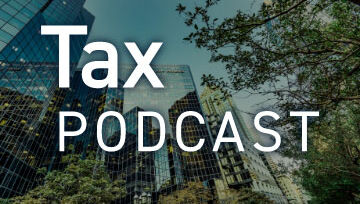Pre-Inflation Reduction Act R&D Tax Credit Background
Since 2016, a qualified small business can elect to apply up to $250,000 of their IRC Section 41 research and development (R&D) tax credits against the employer portion of the Old-Age, Survivors and Disability Insurance payroll tax liability. This is commonly referred to as the 6.2% Social Security tax.
The Inflation Reduction Act Expansion: $250,000 Increase to R&D Tax Credit Payroll Tax Offset for Start-Up Business
Effective for tax years beginning on or after January 1, 2023, the Inflation Reduction Act (IRA) of 2022, doubles the maximum amount of R&D credits that can be applied to offset employer payroll taxes from $250,000 to $500,000. A qualified small business can apply the additional $250,000 of R&D tax credits against the employer’s 1.45% Medicare payroll tax liability.
A qualified small business is defined as a trade or business with less than $5 million in gross receipts in the current tax year, and has a history of earning gross receipts in no more than the past five tax years. The election to apply R&D tax credits against employer payroll tax is important in industries such as life sciences, technology and medical devices where substantial R&D investment is made years before the company may generate sufficient taxable income. The IRA’s provisions enhance the aid to start-up companies with cash savings on payroll taxes while these companies invest in R&D.
What Qualifies Start-Up Business for an R&D Tax Credit Raise? Rules
Qualified small businesses should pay attention to these rules when considering the change in law:
- $250,000 of R&D credits generated in a tax year can be utilized against the employer portion of the FICA payroll tax liability.
- $250,000 of R&D credits generated in a tax year can be utilized against the employer portion of the Medicare payroll tax liability.
- The Inflation Reduction Act maintains the rule that the election to utilize R&D credits against payroll tax may be made for a maximum of five tax years.
- Aggregation rules still apply to all persons or entities treated as a single taxpayer. The credit limit of $500,000 is allocated amongst the group of entities and persons under the normal operation of IRC Section 41.
- R&D credits may offset employer payroll taxes no earlier than the first quarter after the company files its tax return reporting the R&D credits.
When Will the Inflation Reduction Act Take Effect?
Taxpayers can expect the IRS to issue guidance and revised tax forms in 2023 to implement the Inflation Reduction Act’s provisions.
Cherry Bekaert is Here to Help
To learn more about R&D tax credits, qualifying as a small business and making annual elections to apply R&D credits against employer payroll taxes, please reach out to the Cherry Bekaert Tax Credits and Advisory team, or your Cherry Bekaert tax advisor.





